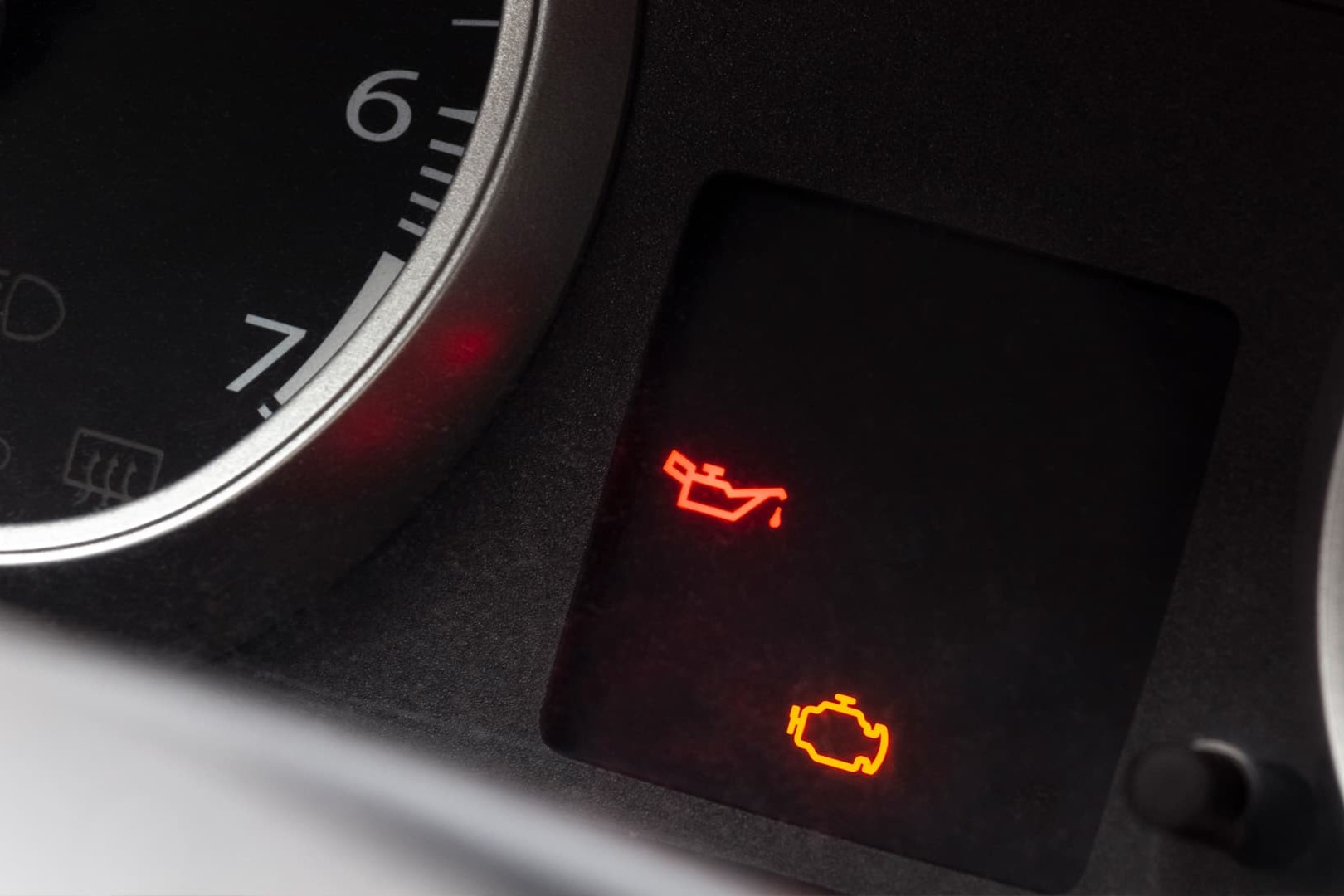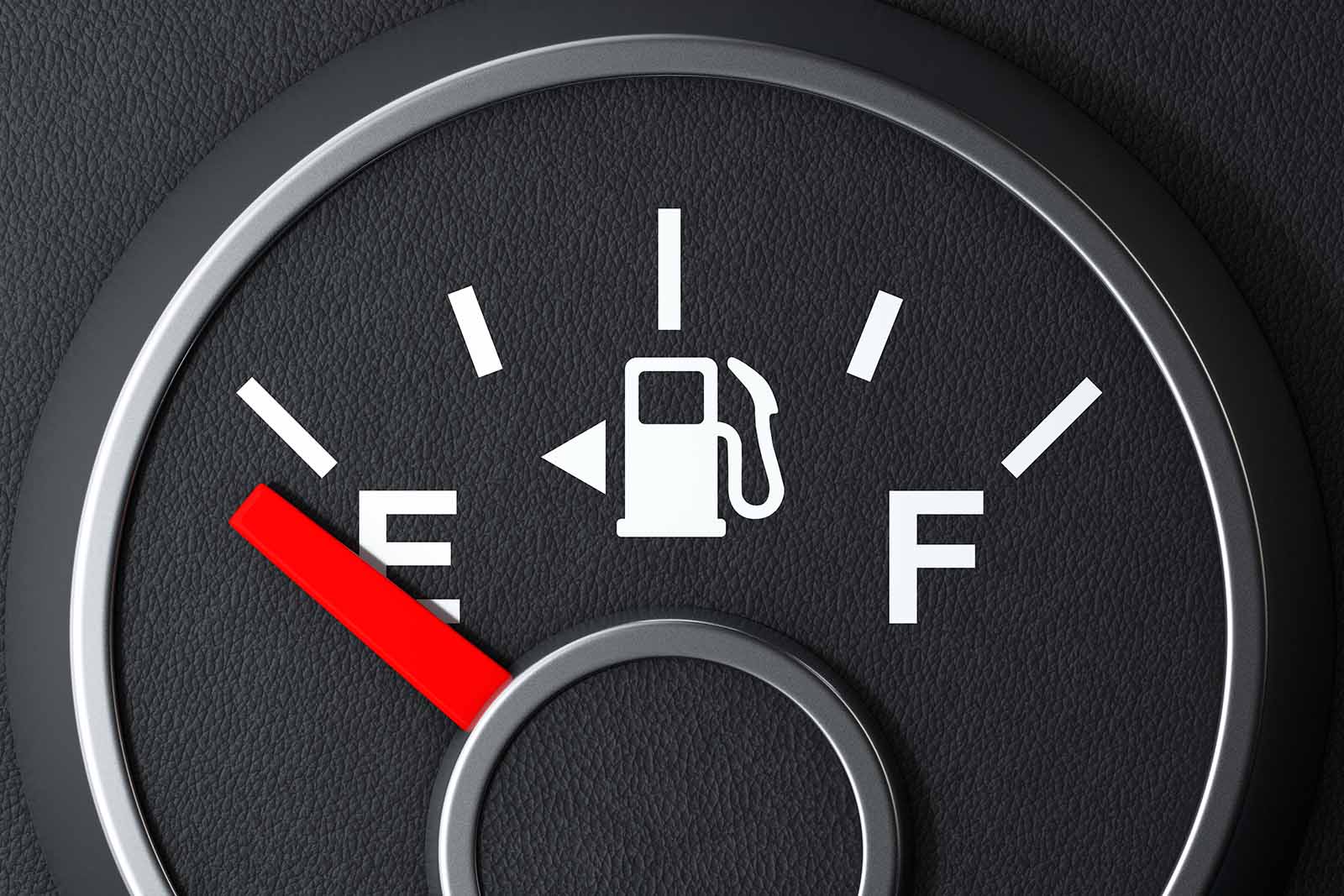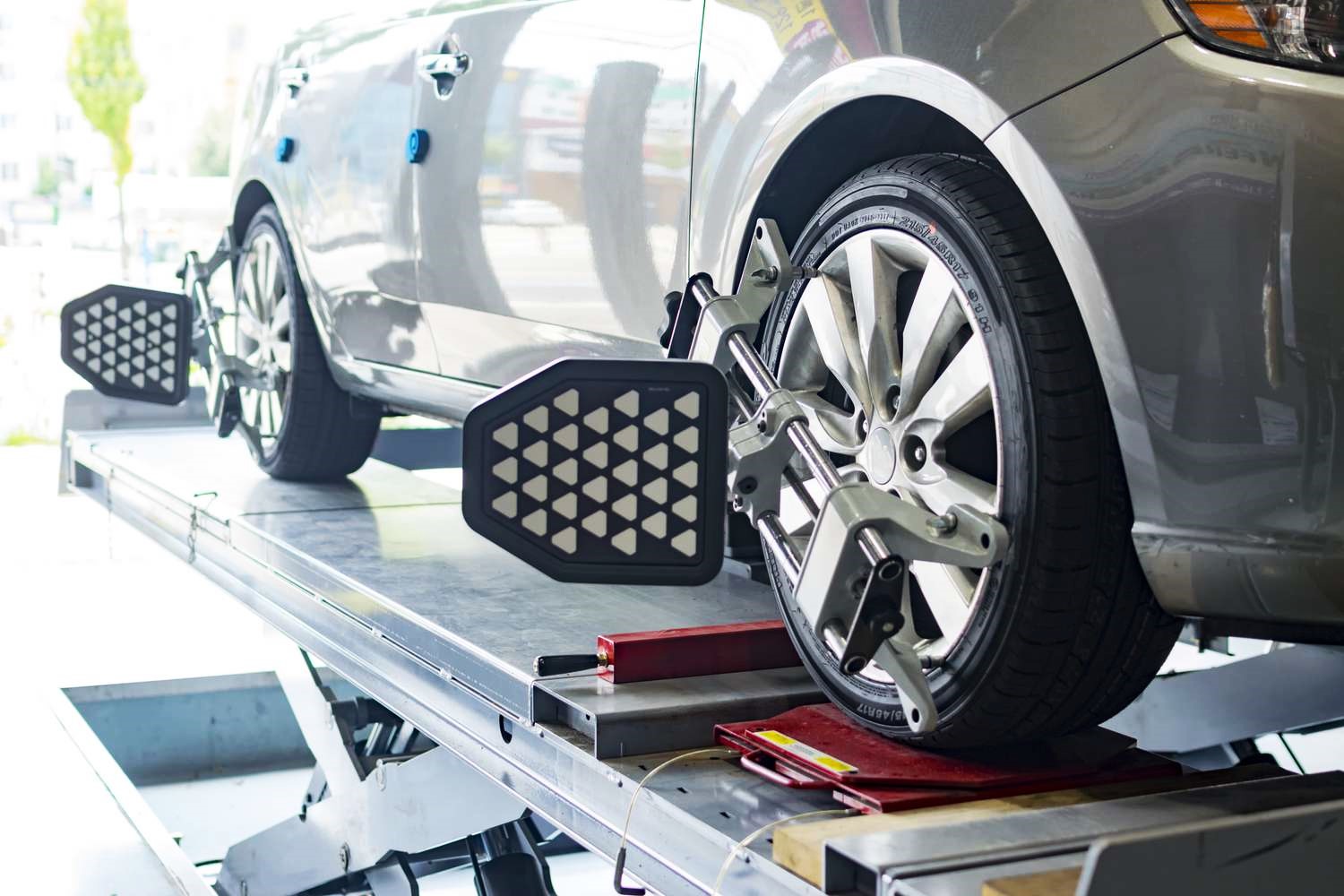Home>Automotive>Signs Of A Faulty Throttle Body Or Sensor – Don’t Miss These Red Flags!


Automotive
Signs Of A Faulty Throttle Body Or Sensor – Don’t Miss These Red Flags!
Published: January 18, 2024
Learn to recognize signs of a faulty throttle body or sensor in your automotive system. Don't overlook these red flags that could indicate potential issues.
(Many of the links in this article redirect to a specific reviewed product. Your purchase of these products through affiliate links helps to generate commission for Noodls.com, at no extra cost. Learn more)
Table of Contents
Introduction
When it comes to the smooth operation of your vehicle, the throttle body and sensor play a crucial role in ensuring optimal performance. These components are integral to the proper functioning of the engine, regulating the amount of air that enters the engine during acceleration. However, like any part of a vehicle, the throttle body and sensor are susceptible to wear and tear, which can lead to a range of issues that affect the overall driving experience.
In this article, we will delve into the signs of a faulty throttle body or sensor, shedding light on the red flags that indicate potential problems. By understanding these indicators, you can take proactive measures to address any issues, thereby safeguarding the efficiency and reliability of your vehicle.
The throttle body serves as a gateway for air to enter the engine. It is equipped with a throttle plate that opens and closes in response to the driver's input via the accelerator pedal. On the other hand, the sensor is responsible for detecting the position of the throttle plate and relaying this information to the engine control unit (ECU). This, in turn, allows the ECU to adjust the air-fuel mixture for optimal combustion.
As with any mechanical component, the throttle body and sensor are prone to malfunctions over time. These issues can manifest in various ways, impacting the vehicle's performance and drivability. By familiarizing yourself with the common signs of a faulty throttle body or sensor, you can address potential problems before they escalate, ultimately saving time and money in the long run.
Now, let's explore the telltale signs that may indicate a malfunctioning throttle body or sensor, empowering you to take proactive steps to maintain your vehicle's peak performance.
What is a Throttle Body and Sensor?
The throttle body serves as a critical component of the air intake system in an internal combustion engine. Situated between the air filter and the intake manifold, the throttle body regulates the amount of air that enters the engine during acceleration. This is achieved through a throttle plate, a pivotal mechanism that opens and closes in response to the driver's input via the accelerator pedal. By controlling the airflow, the throttle body plays a pivotal role in dictating the engine's speed and power output.
Accompanying the throttle body is the throttle position sensor (TPS), which is instrumental in monitoring the position of the throttle plate. The TPS detects the angle at which the throttle plate is positioned and relays this information to the engine control unit (ECU). This enables the ECU to make real-time adjustments to the air-fuel mixture, ensuring optimal combustion and engine performance.
The TPS operates through a potentiometer, a type of variable resistor that changes resistance based on the position of the throttle plate. As the throttle plate opens or closes, the resistance within the TPS varies, allowing the sensor to transmit precise data to the ECU. This seamless communication between the TPS and the ECU is vital for maintaining the engine's efficiency and responsiveness.
In modern vehicles, the throttle body and sensor are often integrated into a single unit, known as an electronic throttle control (ETC) system. This advanced setup eliminates the need for a mechanical link between the accelerator pedal and the throttle plate, replacing it with an electronic connection that enhances precision and responsiveness.
Overall, the throttle body and sensor are pivotal components that work in tandem to regulate airflow into the engine, ensuring optimal combustion and engine performance. Understanding the role of these components is essential for recognizing potential issues and maintaining the overall health of the vehicle's air intake system.
Common Signs of a Faulty Throttle Body or Sensor
-
Reduced Acceleration and Power: One of the most noticeable signs of a faulty throttle body or sensor is a decrease in acceleration and overall power. When these components malfunction, they may fail to regulate the proper amount of air entering the engine, leading to sluggish acceleration and a noticeable loss of power, especially during acceleration.
-
Unstable Idle Speed: A faulty throttle body or sensor can disrupt the engine's idle speed, causing it to fluctuate erratically. This irregular idling may manifest as the engine revving up and down unexpectedly when the vehicle is stationary, indicating an underlying issue with the throttle body or sensor.
-
Stalling or Hesitation: A malfunctioning throttle body or sensor can result in stalling or hesitation during acceleration. This can be particularly evident when trying to accelerate from a standstill or when attempting to maintain a consistent speed. The engine may hesitate or falter, failing to respond promptly to the driver's input.
-
Check Engine Light: A illuminated check engine light can often be an early indicator of a problem with the throttle body or sensor. Modern vehicles are equipped with onboard diagnostics that can detect irregularities in the throttle body or sensor's operation, triggering the check engine light to alert the driver of a potential issue.
-
Poor Fuel Economy: A faulty throttle body or sensor can disrupt the air-fuel mixture, leading to inefficient combustion and decreased fuel economy. If you notice a sudden drop in miles per gallon or find yourself refueling more frequently without a change in driving habits, it could be indicative of a problem with these components.
-
Difficulty Starting the Engine: In some cases, a faulty throttle body or sensor can make it challenging to start the engine. This may manifest as prolonged cranking or a reluctance of the engine to turn over, indicating a disruption in the air intake system's functionality.
-
Sudden Surges in Speed: Conversely, a malfunctioning throttle body or sensor may cause the engine to experience sudden surges in speed without corresponding input from the driver. This can lead to unexpected acceleration, posing a safety risk, especially when driving at low speeds or in congested traffic conditions.
-
Unresponsive Accelerator Pedal: A faulty throttle body or sensor can result in an unresponsive accelerator pedal, where pressing the pedal yields little to no change in engine speed. This lack of responsiveness can make it challenging to control the vehicle's acceleration, compromising driving safety and convenience.
By familiarizing yourself with these common signs of a faulty throttle body or sensor, you can promptly address any potential issues, ensuring the continued reliability and performance of your vehicle. If you notice any of these indicators, it is advisable to have your vehicle inspected by a qualified mechanic to diagnose and resolve the underlying problems.
How to Diagnose a Faulty Throttle Body or Sensor
Diagnosing a faulty throttle body or sensor requires a systematic approach to identify potential issues and pinpoint the root cause of any irregularities in the vehicle's performance. By employing the following diagnostic methods, you can effectively assess the condition of the throttle body and sensor, facilitating timely intervention and remediation.
-
Visual Inspection: Begin by visually inspecting the throttle body and sensor for any signs of physical damage, such as corrosion, worn-out components, or loose connections. Ensure that the electrical connectors and wiring associated with the sensor are intact and free from any visible damage. Additionally, check for the presence of any dirt or debris that may impede the proper functioning of these components.
-
Throttle Position Sensor (TPS) Testing: Utilize a digital multimeter to test the throttle position sensor's voltage output. With the engine off, disconnect the TPS connector and connect the multimeter's positive lead to the TPS signal wire and the negative lead to a suitable ground. Gradually open and close the throttle plate while observing the multimeter readings. A smooth and consistent change in voltage output as the throttle plate moves indicates proper TPS functionality.
-
Electronic Throttle Control (ETC) System Testing: For vehicles equipped with an electronic throttle control system, perform a comprehensive diagnostic scan using a suitable OBD-II scanner. This allows you to retrieve any stored error codes related to the throttle body or sensor, providing valuable insights into potential malfunctions or irregularities.
-
Throttle Body Cleaning: In some cases, irregularities in throttle body or sensor performance may stem from carbon buildup or debris accumulation within the throttle body. Consider performing a thorough cleaning of the throttle body and sensor to remove any deposits that could impede their operation. Use a specialized throttle body cleaner and follow manufacturer-recommended procedures to ensure effective cleaning without causing damage to sensitive components.
-
Functional Testing: Conduct functional tests to evaluate the responsiveness of the throttle body and sensor during vehicle operation. This involves observing the engine's behavior during acceleration, deceleration, and idle conditions, paying close attention to any irregularities such as hesitation, stalling, or unresponsive throttle input.
-
Professional Diagnostic Assistance: If the aforementioned diagnostic measures do not yield conclusive results or if you are uncertain about the findings, seek professional diagnostic assistance from a qualified mechanic or automotive technician. They have the expertise and specialized tools to conduct in-depth diagnostics, including advanced sensor testing and real-time data analysis, to accurately identify and address any underlying issues.
By methodically applying these diagnostic approaches, you can effectively assess the condition of the throttle body and sensor, enabling proactive maintenance and remediation to ensure your vehicle's optimal performance and reliability. Prompt attention to potential throttle body or sensor issues can prevent further complications and contribute to the longevity of your vehicle's air intake system.
Repairing a Faulty Throttle Body or Sensor
Addressing a faulty throttle body or sensor necessitates a strategic approach to rectify the underlying issues and restore the optimal functionality of these critical components. Whether the problem stems from sensor malfunctions, throttle plate irregularities, or electronic control discrepancies, timely and effective repairs are essential to uphold the vehicle's performance and drivability. Here's an in-depth exploration of the repair process for a faulty throttle body or sensor:
-
Throttle Body Cleaning and Maintenance:
Begin by conducting a thorough cleaning of the throttle body to eliminate any accumulated carbon deposits, dirt, or debris that may impede its operation. Utilize a specialized throttle body cleaner and follow manufacturer-recommended procedures to ensure comprehensive cleaning without causing damage to sensitive components. Additionally, inspect the throttle plate for signs of wear or sticking, addressing any irregularities to restore smooth operation. -
Sensor Replacement or Adjustment:
If diagnostic evaluations reveal issues with the throttle position sensor (TPS) or other related sensors, consider replacing or recalibrating these components as necessary. Ensure that the replacement sensor meets the manufacturer's specifications and is compatible with the vehicle's make and model. Proper adjustment and alignment of the sensor are crucial to ensure accurate feedback to the engine control unit (ECU) and maintain optimal performance. -
Electrical System Inspection and Repair:
Thoroughly inspect the electrical connections, wiring harness, and associated components linked to the throttle body and sensor. Address any damaged connectors, frayed wiring, or loose connections to ensure reliable electrical continuity. Additionally, check for signs of corrosion or moisture ingress, as these factors can compromise the sensor's functionality and overall performance. -
Electronic Throttle Control (ETC) System Calibration:
For vehicles equipped with an electronic throttle control system, recalibrate the ETC system to ensure seamless integration with the repaired or replaced throttle body and sensor components. This involves resetting the throttle position and idle parameters within the ECU, aligning them with the newly restored or adjusted components to optimize responsiveness and drivability. -
Professional Diagnostic Verification:
After completing the repair procedures, seek professional diagnostic verification to confirm the effectiveness of the repairs and ensure the proper functioning of the throttle body and sensor. A comprehensive diagnostic scan and real-time data analysis can validate the successful restoration of these critical components, providing assurance of the vehicle's enhanced performance and reliability.
By meticulously addressing these repair aspects, you can effectively rectify a faulty throttle body or sensor, restoring the vehicle's air intake system to its optimal state. Timely intervention and thorough repair procedures contribute to sustained performance, drivability, and overall longevity of the vehicle, underscoring the significance of proactive maintenance and remediation.
Conclusion
In conclusion, the throttle body and sensor are integral components of a vehicle's air intake system, playing a pivotal role in regulating airflow and optimizing engine performance. Recognizing the common signs of a faulty throttle body or sensor empowers vehicle owners to take proactive measures in addressing potential issues, safeguarding the efficiency and reliability of their vehicles.
By understanding the symptoms associated with a malfunctioning throttle body or sensor, such as reduced acceleration, unstable idle speed, and poor fuel economy, drivers can promptly seek diagnostic evaluation and necessary repairs. Additionally, the diagnostic methods outlined, including visual inspection, sensor testing, and professional diagnostic assistance, provide a comprehensive framework for identifying and addressing potential irregularities in the throttle body and sensor.
Furthermore, the repair process for a faulty throttle body or sensor encompasses thorough cleaning, sensor replacement or adjustment, electrical system inspection and repair, and electronic throttle control system calibration. These measures are essential in restoring the optimal functionality of these critical components, ensuring sustained performance, drivability, and overall longevity of the vehicle's air intake system.
In essence, proactive maintenance and timely intervention are key to preserving the health and efficiency of the throttle body and sensor, ultimately contributing to a smoother driving experience and prolonged vehicle longevity. The insights shared in this article serve as a valuable resource for vehicle owners, enabling them to stay vigilant and responsive to the potential indicators of throttle body or sensor irregularities, thereby upholding the overall performance and reliability of their vehicles.













